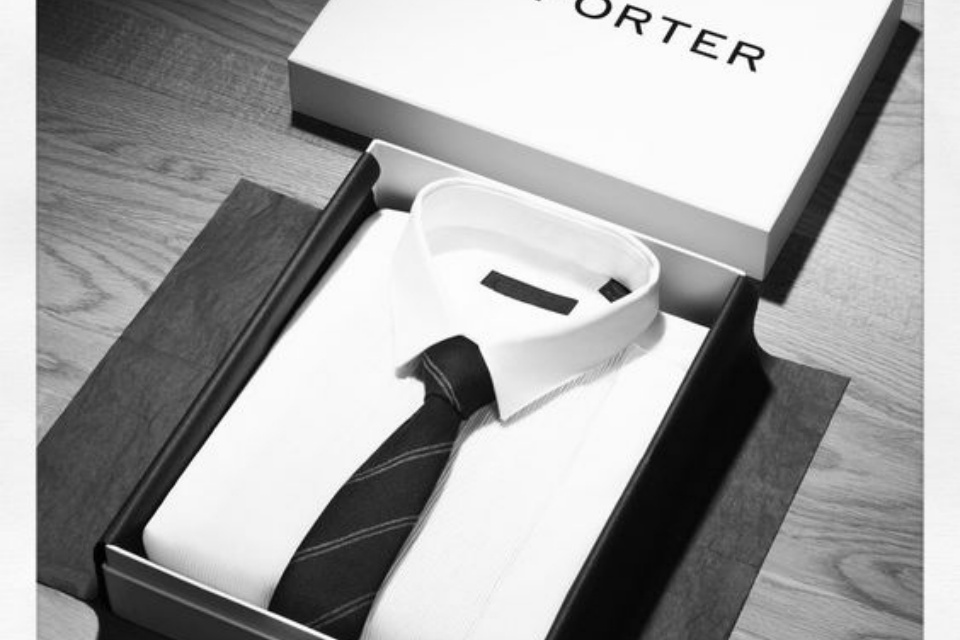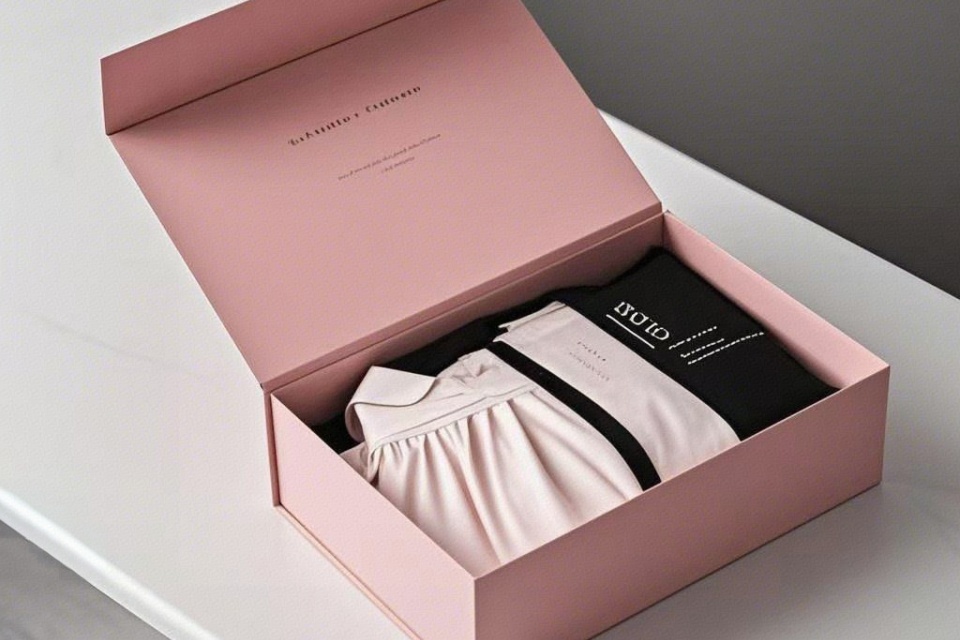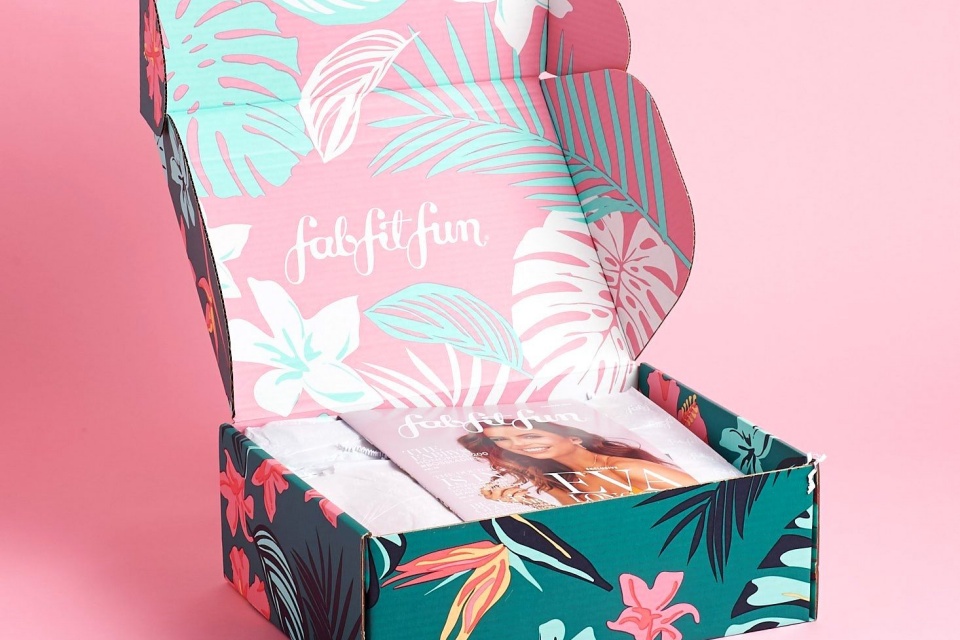Industry News
Cost-Effective Packaging For Clothing Startups
Cost-Effective Packaging For Clothing Startups
Summary
Cost-effective packaging for clothing startups is an essential aspect of establishing a successful brand in the competitive fashion industry. This topic focuses on various packaging strategies that balance affordability with functionality while emphasizing sustainability—a key concern for today's environmentally conscious consumers. As startups strive to differentiate themselves in a saturated market, the choices made regarding packaging can significantly impact customer perception, brand loyalty, and overall profitability.
Notably, the integration of sustainable materials and designs not only aligns with growing consumer demands but also provides startups with a competitive advantage. Many consumers report that eco-friendly packaging influences their purchasing decisions, highlighting the importance of sustainability in contemporary branding strategies. Moreover, the effective use of packaging can enhance the perceived value of products, attract customers, and foster memorable unboxing experiences, all of which contribute to increased sales and market presence.
However, clothing startups face several challenges in implementing cost-effective packaging solutions. These include finding a balance between protection and aesthetics, adhering to sustainability practices, managing costs, and complying with regulatory standards. As startups navigate these hurdles, they must develop innovative packaging strategies that resonate with their target audience while remaining economically viable.
In conclusion, cost-effective packaging serves not only as a protective barrier for products but also as a crucial marketing tool that can enhance brand identity and customer engagement. By prioritizing sustainability and design, clothing startups can create packaging solutions that meet consumer expectations and contribute to long-term success in the fashion industry.
Types of Packaging
Primary Packaging
Primary packaging refers to the packaging that directly holds the product. In the clothing industry, this includes items like garment bags, boxes, and wraps that come in direct contact with the clothing. When selecting materials for primary packaging, it is important to consider sustainability; opting for recycled paper, cardboard, or biodegradable options can significantly reduce environmental impact. Different printing methods, such as flexography, digital, or screen printing, can be utilized to customize packaging designs, ensuring that they not only protect the product but also communicate the brand's identity effectively.
Secondary Packaging
Secondary packaging is used for shipping and protecting products during transit. Common types include corrugated boxes and padded mailers, which provide necessary cushioning for apparel. Sustainable practices in secondary packaging involve using biodegradable, reusable, or recyclable materials to minimize waste. For lightweight items, options like unpadded polyethylene mailers or Tyvek envelopes serve as effective and eco-friendly solutions. The aim is to ensure that the packaging protects the product while also being considerate of the environment.
Tertiary Packaging
Tertiary packaging refers to the outermost layer, primarily used for bulk shipping and storage. This includes larger corrugated boxes that contain multiple units of a product. The choice of materials for tertiary packaging should also prioritize sustainability, utilizing recyclable or biodegradable options to enhance the overall environmental responsibility of the brand.
Custom Product Packaging
Custom product packaging allows clothing startups to tailor packaging to their specific branding needs. This can include unique designs, colors, and materials that align with the company's aesthetic and sustainability goals. Numerous suppliers, such as Hero Packaging and Better Packaging Co., offer customizable options for both primary and secondary packaging. The focus should be on creating packaging that protects the product, provides information, promotes the brand, and minimizes environmental impact.
Sustainable Packaging Solutions
Sustainable packaging solutions play a critical role in today's consumer market, with a growing number of customers favoring brands that utilize eco-friendly packaging. Options such as compostable, biodegradable, and recyclable materials are becoming increasingly popular among consumers who are conscious of their environmental footprint. Incorporating materials like cornstarch, mushroom roots, or seaweed can help businesses align with sustainability practices while also meeting functional needs. Adopting minimalist design aesthetics can further reduce material use and streamline packaging, reinforcing a commitment to sustainability while maintaining product integrity.
Benefits of Cost-effective Packaging
Cost-effective packaging offers numerous advantages for clothing startups, making it an essential consideration for businesses aiming to optimize their resources while enhancing customer appeal.
Enhanced Value Perception
Well-designed packaging communicates brand values and adds perceived value to the product. Premium packaging can justify higher prices by enhancing the overall presentation and experience for the consumer. This perception is crucial, especially in the highly competitive clothing market where first impressions significantly impact purchasing decisions.
Attracting Customers
Custom packaging that is thoughtfully designed not only protects products but also serves as a marketing tool to attract customers. Unique and appealing packaging can differentiate a brand from its competitors, making it more likely to capture the attention of potential buyers. Research indicates that a compelling packaging design influences a significant portion of consumer purchasing decisions, with 72% of American consumers acknowledging that packaging affects their choices.
Sustainable Practices
Adopting cost-effective packaging often aligns with sustainability initiatives, as many inexpensive packaging materials, such as paper and cardboard, are more environmentally friendly than traditional plastics. This shift not only meets the growing consumer demand for sustainable practices—reported by roughly two-thirds of consumers as important when making purchases—but can also enhance brand loyalty among eco-conscious shoppers.
Cost Management
Effective packaging solutions can help startups manage costs more efficiently. By selecting affordable yet quality materials and optimizing design for functionality, businesses can minimize waste and reduce overall packaging expenses. Streamlined packaging designs can also lead to cost savings by decreasing material usage without sacrificing quality or protection.
Brand Consistency
Cost-effective packaging allows startups to maintain brand consistency across various products. Integrating key brand elements such as color schemes, logos, and typography into packaging can strengthen brand identity and enhance customer trust. This consistency not only fosters familiarity with the target audience but also contributes to long-term brand loyalty.
Memorable Customer Experiences
Finally, creative and cost-effective packaging can create memorable experiences for customers. Positive unboxing experiences can be shared on social media, generating organic brand promotion and encouraging new customers to explore the product offerings. In a marketplace saturated with options, memorable packaging can significantly enhance brand recall and customer satisfaction.
Strategies for Implementing Cost-effective Packaging
Implementing cost-effective packaging strategies is crucial for clothing startups aiming to maintain competitiveness while managing expenses. Several approaches can be utilized to achieve both affordability and functionality in packaging design.
Collaboration with Suppliers
Building strong relationships with reliable suppliers is essential for securing quality materials at competitive prices. Startups should engage in thorough research to identify suppliers who share their commitment to sustainability and cost efficiency. Networking at industry events and trade shows can provide valuable contacts and insights into finding trustworthy partners that can support their packaging needs.
Selecting the Right Materials
Choosing the appropriate packaging materials is one of the most significant challenges in packaging design. Paper-based packaging is often highlighted as an ideal choice for many products due to its balance of cost and sustainability. Startups should consider using renewable resources to mitigate the impact of the ongoing raw material shortages, which have been exacerbated by increased demand across various industries.
Custom Packaging Solutions
Custom packaging can differentiate a brand in a crowded marketplace without requiring extensive time or resources. Utilizing custom boxes wholesale allows businesses to create unique packaging designs that align with their branding while keeping costs manageable. This approach not only enhances product visibility but also reinforces brand identity. Furthermore, a well-designed package serves to protect products during shipping, minimizing losses and returns, which can significantly impact profitability.
Budgeting for Packaging Costs
It is generally advisable for businesses to allocate about 10-30% of their product's retail price to packaging expenses. This allocation ensures that packaging is both economical and effective in promoting the product. By carefully analyzing product pricing and packaging needs, startups can devise a budget that supports both quality and cost-effectiveness.
Sustainable Practices
Incorporating sustainability into packaging strategies not only attracts environmentally conscious consumers but can also lead to long-term cost savings. Brands like C&A and H&M are leading the way by transitioning to reusable and recyclable packaging options. They aim for their packaging to be made from recycled or sustainably sourced materials by specified target dates, thus reducing their environmental footprint while enhancing their market appeal. Startups should consider similar sustainable practices to improve their brand image and potentially lower material costs in the long run.
Embracing Technology
Leveraging technology can streamline the packaging process, reducing both time and costs. Implementing inventory management systems and utilizing product tracking tools can enhance operational efficiency, ensuring that packaging meets both quality standards and budget constraints. Moreover, investing in automated packaging solutions can lower labor costs and minimize errors during the packing process, further contributing to cost-effective operations.
By integrating these strategies, clothing startups can effectively implement cost-efficient packaging solutions that not only protect their products but also enhance their market presence.
Case Studies
Product Launch Strategy in Clothing Startups
A collection of 30 case studies on Product Launch Strategy highlights how various organizations, including clothing startups, are navigating the complexities of launching their products in a competitive marketplace. These studies examine strategic approaches and practical implementations tailored to the unique challenges faced by new entrants in the fashion industry.
Challenges in Packaging Design
The clothing startup sector faces specific challenges related to packaging design. Selecting suitable materials is crucial, as various options can affect both cost and sustainability. Paper-based packaging is often considered ideal due to its balance of cost-effectiveness and environmental impact. Additionally, overcoming budget constraints while creating eye-catching designs is a common hurdle that many startups encounter. These companies are encouraged to prioritize functionality without compromising on aesthetics, thereby achieving effective packaging solutions that resonate with their target audience.
Impact of Packaging on Consumer Behavior
Research indicates that packaging plays a significant role in influencing consumer purchasing decisions. A study found that 72% of American consumers are swayed by packaging design, while 67% consider the materials used to be equally important. For clothing startups, this underscores the necessity of investing in thoughtful packaging strategies that enhance brand perception and customer engagement, ultimately leading to increased sales and market presence.
Challenges and Considerations
The clothing startup industry faces several significant challenges when it comes to packaging, which can greatly influence both operational efficiency and brand perception.
Key Challenges
1. Protection and Functionality
Ensuring that packaging adequately protects clothing items during transit is paramount. Startups must find materials that not only safeguard the products but also maintain an appealing presentation for consumers upon arrival. This challenge necessitates a careful balance between cost, quality, and sustainability.
2. Sustainability Pressures
With growing consumer demand for sustainable practices, startups are under pressure to adopt eco-friendly packaging solutions. This includes using recyclable, compostable, or biodegradable materials, which often come at a higher cost compared to traditional options. Companies must weigh the impact of these materials on their budget against the potential for increased customer loyalty driven by sustainability commitments.
3. Cost Management
Managing packaging costs is crucial for startups operating on tight budgets. While sustainable materials can be more expensive, startups can mitigate costs by optimizing packaging design and working with reliable logistics partners to maintain quality without overspending. Careful consideration of material selection and design can lead to significant savings.
4. Compliance with Regulations
Adapting to environmental regulations related to packaging is increasingly important. Startups must navigate a complex landscape of local, national, and international standards that govern the use of packaging materials, ensuring compliance to avoid penalties. This may involve investment in research and development to innovate packaging solutions that are both effective and environmentally friendly.
Considerations for Effective Packaging Strategy
1. Balancing Aesthetics and Functionality
Packaging must not only be functional but also visually appealing to enhance brand perception. A well-designed package communicates the brand's values and can justify higher price points. Startups should collaborate with designers specializing in eco-friendly packaging to create solutions that attract customers while also being practical.
2. Trade-offs in Material Choices
Startups often face trade-offs when selecting materials for packaging. For instance, while compostable options reduce environmental impact, they may have limitations regarding durability and cost. Therefore, companies need to evaluate the lifecycle of materials and consider how they fit into the overall supply chain and distribution processes.
3. Supply Chain Adaptation
As startups transition to biodegradable packaging, adapting their supply chain infrastructure is crucial. This includes ensuring that logistics can accommodate new materials, and that compliance with environmental standards is maintained throughout the process. Monitoring compliance and managing potential bottlenecks in material supply will be essential to avoid disruptions.
Future Trends in Packaging
Sustainable Packaging Solutions
As consumer awareness around environmental issues continues to grow, sustainable packaging is becoming a pivotal focus for clothing startups. Many brands are increasingly turning to materials such as recycled paper, cardboard, and compostable elements to create packaging that not only protects their products but also aligns with eco-friendly values. The adoption of sustainable materials reduces the overall carbon footprint associated with packaging and offers a viable alternative to traditional plastic options.
Biodegradable Materials
Biodegradable packaging is gaining traction as a promising solution within the industry. This type of packaging is made from naturally derived polymers sourced from agricultural products like starch and sugarcane. The appeal of biodegradable materials lies in their ability to break down within a year after disposal, thus minimizing environmental impact. However, technical challenges related to the production and functionality of these materials still pose barriers to widespread adoption.
Minimalist Design Aesthetics
Minimalist design is resurfacing as a significant trend in packaging, particularly for clothing brands that wish to focus consumer attention on the product itself. This approach not only enhances the visual appeal but also reduces waste by eliminating excess materials. Streamlined designs often incorporate recyclable materials and can communicate a brand's commitment to sustainability effectively.
Closed-Loop Systems
Clothing startups are also exploring closed-loop systems, which aim to minimize waste through recycling and reusing materials. This model not only helps reduce the environmental impact of production but also encourages a more circular economy. Companies are partnering to repair and resell used clothing, creating value from waste and promoting sustainability in the fashion industry.
Technological Integration
The integration of technology in packaging is another emerging trend. Innovations such as carbon-neutral shipping options and smart packaging that can track and monitor products throughout the supply chain are becoming more prevalent. Such technologies not only enhance efficiency but also cater to the growing segment of environmentally conscious consumers who prioritize sustainable practices in their purchasing decisions.
Categories
Latest News
Contact Us
Contact: Aaron Lee
Phone: +8613570866244
Tel: +8675529490260
Add: Li Songlang 2nd Industrial Zone,No.18,FengTang Rd,Guangming New District


